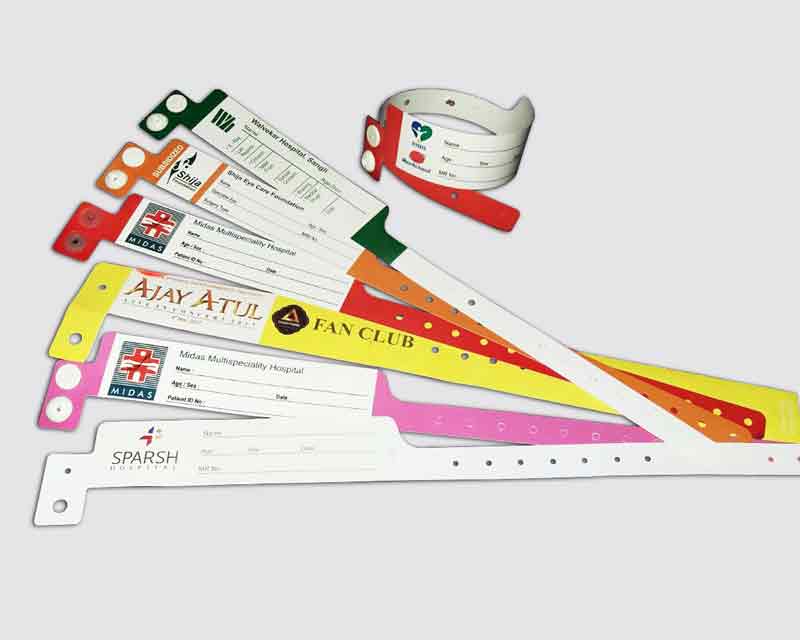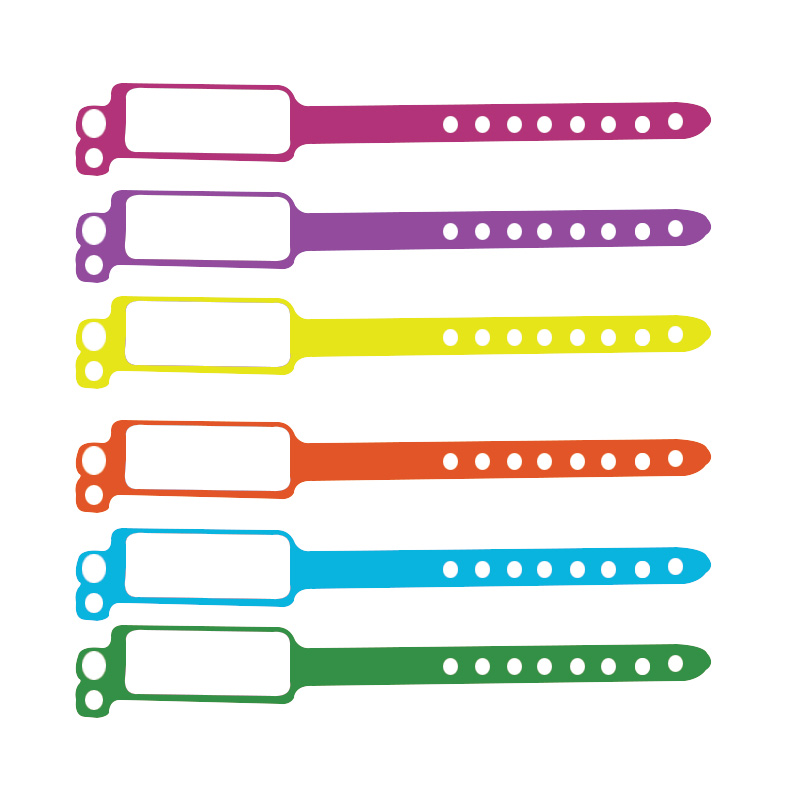The Increasing Need for Cutting-Edge Patient Identification Bands in Modern Healthcare Facilities
The Increasing Need for Cutting-Edge Patient Identification Bands in Modern Healthcare Facilities
Blog Article
Discovering the Various Sorts Of Patient Identification Band Utilized in Clinical Facilities
In the complex globe of medical care, the critical duty of Patient Identification bands usually goes unnoticed. These bands, differing from basic paper wristbands to advanced RFID bands, form the backbone of Patient safety protocols, ensuring accuracy in Patient Identification. Yet, the large diversity of these bands, each with its unique advantages and restrictions, is often ignored. As we navigate via this subject, one might obtain insight into the subtle intricacies and vital significance of such bands in medical centers.
Recognizing the Value of Patient Identification Bands
While they might appear like mere devices, Patient Identification bands play a crucial role in medical facilities. These bands function as a critical device for verifying Patient identification, stopping clinical errors related to misidentification. The bands generally display necessary details such as the Patient's name, age, blood kind, and any type of known allergic reactions. They permit medical care experts to promptly access this important info, therefore facilitating accurate and timely clinical therapy. Patient Identification bands additionally help in improving management tasks, ensuring exact record-keeping and payment. Regardless of their simplicity, these bands embody the principle of Patient security, a foundation of high quality healthcare. Without them, the threat of medical mistakes, and consequently, Patient damage, may dramatically boost.
Traditional Paper Wristbands: Their Use and Limitations
Traditional paper wristbands have actually been a staple in Patient Identification across various clinical centers. While their usage is widespread, they harbor specific constraints that may impact their effectiveness in Patient management. This area will certainly concentrate on the range of their application and the integral disadvantages related to their usage.
Paper Wristbands: Usage Scope
In the realm of Patient Identification, paper wristbands have actually long held a crucial duty. These bands are generally utilized in outpatient settings, where the Patient's keep is short-lived. The wristbands consist of important information such as the Patient's name, day of birth, and an unique Identification number. This simple, yet reliable system, enables clinical experts to quickly and precisely determine patients, guaranteeing the correct therapy is provided. Paper wristbands are additionally used in emergency situation circumstances, where fast Identification is critical. Their usage expands to events like blood donation drives and mass inoculation programs, even more highlighting their versatility. In spite of advancements in technology, the modest paper wristband continues to be a cost-efficient and trustworthy service for Patient Identification in various healthcare scenarios.
Limitations of Paper Wristbands
In spite of their extensive use, paper wristbands are not without their downsides. In addition, paper wristbands usually lack the technological capabilities of even more modern options, such as barcoding or RFID chips, limiting their capability to merely presenting created details. Paper wristbands can create discomfort or skin irritability to some people, specifically when used for extended durations.
Barcoded Wristbands: Innovations in Patient Identification
While Patient Identification has long been a crucial facet of health care, the development of barcoded wristbands symbolizes a significant jump forward. These bands leverage the simplicity of barcoding innovation, enabling Patient info to be promptly scanned and accessed. They enhance the speed and precision of Patient Identification, minimizing the risk of clinical mistakes connected to misidentification. Barcoded wristbands are economical, simple to create, and get rid of handwriting mistakes typical with hands-on systems. Nevertheless, they are not without constraints. While they provide enhancements over traditional bands, the barcode can come to be smudged or worn, providing it unreadable. Regardless of this, barcoded wristbands stay a vital device in contemporary medical care settings, representing the intersection of technology and Patient care.
Radio Frequency Identification (RFID) Bands: a Step Towards Futuristic Healthcare
The advancement of Patient Identification bands has produced the introduction of Superhigh frequency Identification (RFID) Bands (patient identification band). These ingenious devices present vital advantages for health care facilities, using a more efficient and highly progressed methods of Patient Identification. The execution of RFID in health care is a substantial step towards an extra advanced approach to Patient management and safety
Recognizing RFID Bands

RFID Bands: Secret Benefits
Accepting a future where modern technology and medical care combine, radio frequency Identification bands offer several vital benefits. Mainly, these bands improve Patient safety by providing exact, instantaneous Identification, therefore decreasing clinical imp source errors. RFID bands can store a large quantity of Patient information, including medical background and allergic reactions, making it possible for individualized care. They additionally simplify management jobs, as the automated information entrance changes hands-on procedures, boosting effectiveness and lowering paperwork. RFID bands use real-time monitoring of people, essential in risky environments such as surgical treatment or extensive care. These bands are resilient and immune to ecological variables, guaranteeing consistent functionality. In general, RFID bands stand for a considerable development in Patient Identification innovation, benefiting both individuals and health care companies.
Executing RFID in Health Care
As we tip right into a technologically advanced era, the application of RFID bands in health care ends up being progressively crucial. These bands give a smooth means to track and recognize people, guaranteeing their safety and security and boosting performance in therapy procedures. RFID bands supply countless benefits over typical Identification techniques. They can keep a large amount of data, including the Patient's clinical background and treatment plans, which can be easily accessed by healthcare providers. navigate here This information aids medical professionals make notified decisions concerning the Patient's therapy strategy. Additionally, RFID bands decrease medical mistakes by supplying precise Patient Identification, which is vital in stopping misdiagnosis or wrong medication management. Hence, the application of RFID bands is a significant action towards improving Patient safety and medical care shipment.

Color-Coded Wristbands: Helping in Quick and Accurate Diagnosis
In the busy environment of a medical facility, color-coded wristbands have actually become essential devices for swift and exact Identification of a patient's medical problem. These wristbands, put on by individuals, bring specific shades that represent different medical problems or conditions. Red could show allergy risks, while yellow could represent a fall threat. This system is created to provide prompt visual cues to medical care carriers, improving Patient safety and security and care high quality. In emergency circumstances, the use of these wristbands permits for fast decision-making. However, the performance of color-coded wristbands depends upon the uniformity of shade interpretation Read Full Article throughout healthcare establishments, needing common criteria for consistent application.
Techniques for Reliable Execution and Management of Patient ID Bands
Attaining optimal use Patient Identification bands requires a well-structured method for their execution and management. The initial step includes training all health and wellness workers on the relevance of correctly applying and reading these bands. Health centers need to standardize the usage of ID bands throughout all divisions, making certain harmony and lowering disparities. Normal audits needs to be performed to validate adherence to plans and to remedy any type of variances. Patient education is also important; individuals should comprehend the purpose of the bands and the need for their consistent wear. patient identification band. Lastly, it's crucial to have a back-up plan in position, such as barcode scanning or biometrics, to ensure that Patient Identification is never endangered.
Conclusion
Patient Identification bands are essential in medical centers to guarantee safety and security and accuracy. Typical paper, barcoded, RFID, and color-coded wristbands each hold distinct benefits, ranging from cost-effectiveness to innovative data storage and instantaneous medical informs. Effective execution and management of these bands can dramatically decrease clinical mistakes, increase performance, and improve general Patient treatment. Thus, understanding and making use of these Identification tools is vital for keeping high standards in health care.
These bands, varying from basic paper wristbands to innovative RFID bands, form the backbone of Patient safety procedures, making certain accuracy in Patient Identification.The development of Patient Identification bands has brought concerning the appearance of Radio Frequency Identification (RFID) Bands. Overall, RFID bands represent a significant development in Patient Identification innovation, benefiting both individuals and medical care providers.
RFID bands decrease medical errors by providing accurate Patient Identification, which is essential in avoiding misdiagnosis or wrong medication administration. Patient education is also essential; individuals should comprehend the function of the bands and the requirement for their continuous wear.
Report this page